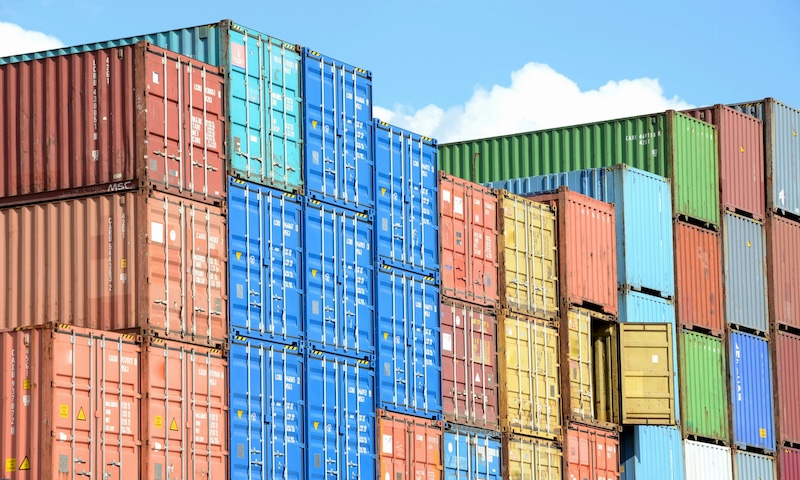Trainee solicitor Jess Woodrow explores the government’s latest free trade agreements

The UK’s trade landscape has significantly transformed since the UK’s departure from the European Union. The shift from EU-wide regulations to independent trade policies has brought both challenges and opportunities for UK businesses. One noteworthy development is the publication of the UK’s first post-Brexit trade strategy in June 2025, where the government outlined a new direction aimed at simplifying trade, rebuilding EU relations and expanding global partnerships.
This article seeks to explore the evolution of the UK’s tariff regime by setting out the regulatory framework since Brexit, examining key reforms such as the UKGT, and assessing how these changes align with broader strategic goals.
A New Tariff Regime: UKGT vs EU CET
On 1 January 2021, the UK introduced The UK Global Tariff (UKGT), replacing the EU’s Common External Tariff (EU CET). This change was more than symbolic – it represented the UK’s first independent tariff regime in nearly half a century and provided the legal foundation for the UK to set its own customs duties post-Brexit. The UKGT was designed with simplification and economic efficiency in mind. It streamlined over 6,000 tariff lines and rounded tariff rates for easier application, for example, chemical products previously subject to fractional tariffs of 3.8% were substituted to 3%. A further noteworthy change was the elimination of nuisance tariffs (those set below 2%) which were deemed administratively burdensome and economically negligible — indeed, the cost of dealing with them often exceeded the revenue they generated.
In addition to simplification, tariffs were removed on goods not produced domestically and on inputs essential to UK industries, such as certain industrial components and crushed spices. The tariff regime also reflected the UK’s environmental priorities, cutting duties on over 100 green products that support renewable energy, energy efficiency, and recycling technologies.
While the UKGT liberalised many areas, it retained protective tariffs for key sectors such as agriculture and automotive, maintaining duties on products like lamb, beef, and poultry to safeguard domestic producers. This balanced approach aimed to foster competitiveness while ensuring strategic industries were not exposed to sudden market shocks.
EU-UK trade: Beyond Brexit
The EU–UK Trade and Cooperation Agreement (TCA), signed on 30 December 2020 and provisionally applied from 1 January 2021, forms the core framework for trade between the UK and the European Union following Brexit. One of its key advantages is that it allows goods to move between the two regions without tariffs or trade quotas, arguably helping to maintain the flow of goods. However, this benefit is conditional on meeting specific rules of origin, which require businesses to demonstrate that their products were sufficiently produced or processed within the UK or EU. These rules can be complex and often involve detailed documentation, creating additional challenges for companies, particularly those relying on global supply chains.
Want to write for the Legal Cheek Journal?
Find out moreFor many businesses, especially those importing components from third countries, the rules of origin have created an administrative burden. Electric vehicle manufacturers, for instance, struggle to meet the TCA’s requirement that 55% of a product’s value be locally sourced. As a result, some exporters opt to pay tariffs rather than navigate the complex paperwork. Indeed, a 2022 study in the Oxford Review of Economic Policy estimated that UK exports fell by 7% and EU imports by 14% due to these frictions.
The 2025 trade strategy: A new direction
In June 2025, the UK unveiled its new trade strategy — the first comprehensive plan since leaving the EU. The strategy outlines a series of measures linked to key domestic objectives, including the transition to net zero and support for SMEs (small and medium-sized enterprises). This has several implications for businesses as they navigate the post-Brexit trade environment.
Firstly, the strategy aims to simplify processes by cutting down on red tape and reducing the administrative burden that has grown since the UK left the EU, most notably from the rules of origin. This is particularly helpful for SMEs, many of whom stopped trading with the EU due to complex customs procedures and paperwork. Further efforts to support these businesses were seen by the government’s introduction of the Small Export Builder scheme, which provides easier access to export insurance and financial backing through UK export finance.
Second, the strategy focuses on rebuilding trade relations with the EU, which remains the UK’s largest trading partner, accounting for 41% of UK exports and 51% of UK imports in 2024. This includes efforts to improve regulatory cooperation and explore mutual recognition agreements, which could help reduce non-tariff barriers and make it easier for UK goods and services to enter EU markets.
Third, the strategy takes a more flexible and targeted approach to trade agreements. While Free Trade Agreements (FTAs) remain important, with recent trade agreements signed with the US and India, the strategy emphasises that they are not the only tool for advancing trade. Instead, the UK will pursue a broader mix of arrangements, such as digital economy agreements and sector-specific partnerships.
Conclusion: The bigger picture for UK businesses
Undeniably, the UK’s trade success lies in its services — rising from £330bn to over £500bn in exports per annum since 2019. This now accounts for over half of UK exports, with traditional strengths in financial services growing alongside AI, travel and transport services. By adopting a strategy of market diversification, a world full of opportunity for UK exporters remains. The 2025 Trade Strategy reinforces this potential by removing outdated barriers, supporting innovation, and promoting targeted trade partnerships that reflect the UK’s strengths.
Jess Woodrow is a third-seat trainee at Irwin Mitchell.
Want to write for the Legal Cheek Journal?
Find out more


